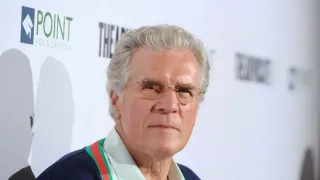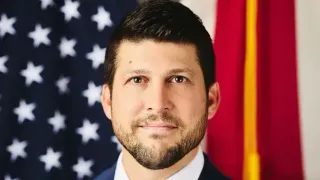December 31, 2014
Top HIV Breakthroughs of 2014
Winnie McCroy READ TIME: 5 MIN.
"Cure" was the keyword of 2014, with doctors across the globe infusing the battle against HIV/AIDS with the hope of an eventual cure. Springing out of the success of the Berlin patient Timothy Ray Brown, the only person ever successfully functionally 'cured' of HIV after a marrow transplant, similar functional 'cures' have surfaced from the U.S. to Spain, with legislators and advocates vowing to see an end to AIDS by 2020. Here's hoping they're right.
amfAR HIV Cure Summit Discusses the Latest Scientific Breakthroughs: On Monday, November 17, nearly 200 of the leading voices in HIV/AIDS research gathered at 7 World Trade Center in New York for amfAR's HIV Cure Summit to talk about the search for a cure for HIV.
"Finding a cure for HIV scientifically is obviously very complicated, and unless you spend all day every day steeping yourself in the science of HIV, it can probably be a little difficult to keep up with what's going on," said amfAR's Vice President and Director of Research, Rowena Johnson.
To that end, amfAR gathered seven amfAR Research Consortium on HIV Eradication (ARCHE)-funded scientists to share their updates on the science around HIV, and the search for the cure. Read more here.
Researchers Closer to Functional Cure for HIV: New clinical trial results suggest that a "functional cure" for HIV is one step closer to becoming reality. Gary Blick, AAHIVS, Medical & Research Director of CIRCLE CARE Center and Chief Medical Officer of World Health Clinicians, ran a study, which demonstrated that an individual's T cells can be safely engineered to make him or her resistant to HIV infection using ZFN-based genome editing technology and safely infused resulting in decreases in HIV viral load off ART and one subject whose viral load became undetectable. Read more here.
Spanish Doctors Believe They've Found a Cure for HIV: Doctors in Barcelona, Spain believe that they have found a possible cure for HIV via a blood transfer from a donor with a genetic mutation, but researchers warn that it's going to be a long time coming. HIV Plus Magazine reports that the Spanish research team is following the similar hypothesis to Harvard researchers who believe that a blood transplant from a donor with the CCR5 Delta 32 genetic mutation could "close the door" on HIV, as it prevents HIV from entering healthy white cells and replicating. This mutation occurs in about 1 percent of the population. The announcement was spurred by encouraging results in the experimental treatment given to a 37-year-old man who contracted HIV in 2009. This "Barcelona Patient" developed lymphoma in 2012, and when he received his transplant of umbilical cord blood, doctors made sure it was from a donor with the CCR5 Delta 32. Read more here.
Gov. Cuomo Announces End of AIDS Taskforce: On October 14, Governor Andrew M. Cuomo announced the creation of the End of AIDS Task Force to implement his bold plan to end new HIV infections in the Empire State by 2020.
"HIV/AIDS has plagued families across this State for too long, and together we are going to put an end to this epidemic," Governor Cuomo said. "This disease can impact people from all walks of life, and the sooner society realizes that, the sooner we can end the stigma that keeps too many people from getting tested and treated. I want to thank all who have joined us to implement this plan so far -- their contributions are helping to save lives in virtually every corner of our State." Read more here.
Worldwide Scientists Convene in Marseille to Tackle Deadly Virus: On May 21-23, more than 900 top experts will convene in Marseilles for the International Symposium on HIV and Emerging Infectious Diseases (ISHEID). The conference will focus on current major viral epidemics and pandemics like HIV, Hepatitis C, and newer viral menaces facing humanity today.
"This meeting is a unique opportunity for doctors and researchers to share their work in order to find ways to end viral epidemics and pandemics with new therapeutic and preventive approaches," said Alain Lafeuillade, MD, President of the ISHEID.
Held under the auspices of the French agency for AIDS and viral hepatitis research (ANRS), the gathering will focus on HIV/AIDS and Hepatitis C Virus (HCV), as well as emerging viral threats such as MERS (Middle East Respiratory Syndrome) Coronavirus, Hepatitis E, and new deadly flu strains.
Read more here.






